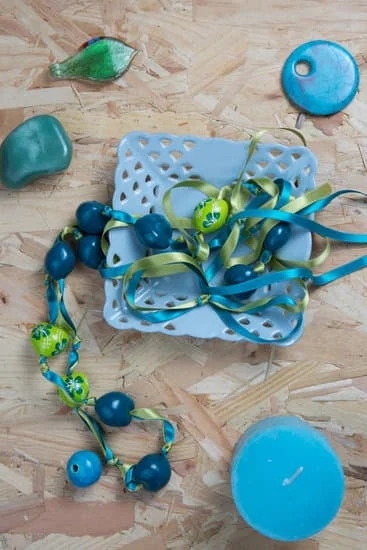The history of handmade jewelry spans across centuries and cultures, representing a timeless art form that has endured through the ages. From ancient origins to modern innovations, the craft of creating unique and personalized jewelry by hand has played a significant role in human history. This article aims to explore the rich and diverse history of handmade jewelry, from its cultural significance to its evolution of techniques and iconic styles.
Tracing back to ancient civilizations, the practice of crafting handmade jewelry can be found in various cultures around the world. The earliest known examples date back thousands of years, revealing the intricate designs and craftsmanship of our ancestors. Through this exploration, we can gain insight into the role of handmade jewelry in different societies and its significance as a form of personal adornment, status symbol, and cultural expression.
As time progressed, handmade jewelry making evolved alongside advancements in technology, materials, and aesthetic preferences. Techniques have been refined and adapted over time, reflecting changes in fashion trends, societal values, and artistic movements. By examining these developments, we can appreciate how the art of creating handmade jewelry has continuously adapted to meet the needs and desires of each era.
Ancient Origins
The history of handmade jewelry can be traced back to ancient civilizations, where early humans used natural materials such as shells, stones, and animal bones to craft adornments for personal and ceremonial purposes. The practice of jewelry making was not only a form of self-expression but also held spiritual and social significance within these communities.
Early Techniques and Materials
Ancient artisans utilized primitive tools and techniques to create jewelry by hand. From carving intricate designs on bone pendants to stringing together colorful beads for necklaces, the craftsmanship of handmade jewelry reflected the creativity and resourcefulness of early civilizations. Natural materials such as copper, bronze, gold, and silver were also introduced in different regions, leading to the development of metalworking techniques that are still used in jewelry making today.
Social Status and Beliefs
In many ancient societies, handmade jewelry served as symbols of status and wealth. Elaborate pieces adorned with precious stones were reserved for royalty and nobility, while simpler designs were worn by the common people. Additionally, certain jewelry items held religious or spiritual significance, often believed to provide protection or guidance. These cultural beliefs have influenced the design and creation of handmade jewelry throughout history.
Trade and Influence
As civilizations began to interact through trade routes and expansion, the exchange of jewelry-making techniques and styles became prevalent. This cross-cultural exchange led to the fusion of different aesthetic traditions, resulting in unique blends of designs that reflected a melting pot of influences. The artistry found in ancient handmade jewelry continues to inspire contemporary artisans and designers today.
Cultural Significance
Handmade jewelry has played a significant role in various societies throughout history, serving as more than just decorative accessories. From ancient civilizations to modern cultures, handmade jewelry has held deep cultural significance and symbolism. Here are some examples of the role of handmade jewelry in different societies:
- Ancient Egypt: In ancient Egypt, jewelry was not only a symbol of wealth and status but also had religious and protective significance. Amulets and talismans were commonly worn as protection against evil spirits or to bring good luck.
- Native American Culture: Handmade jewelry has been an integral part of Native American culture for centuries. Each piece is crafted with traditional techniques and materials, often featuring symbols and designs that hold spiritual significance within the community.
- Indian Tradition: In India, handmade jewelry is deeply rooted in tradition and symbolism. Different regions have distinct styles of jewelry making, with each piece carrying cultural meanings related to marriage, religion, or social status.
Today, the cultural significance of handmade jewelry continues to be celebrated and preserved by artisans around the world. As new generations embrace traditional craftsmanship, the stories and meanings behind handmade jewelry are being passed down through time, ensuring that its cultural importance remains intact.
As we delve into the history of handmade jewelry, it becomes clear that these pieces are more than just adornments; they are an expression of identity, tradition, and belief across diverse societies throughout history.
Evolution of Techniques
The history of handmade jewelry is a rich tapestry that has evolved over centuries, from the early days of human civilization to the modern era. The techniques used in creating handmade jewelry have undergone significant changes, driven by advancements in technology, shifts in cultural practices, and the availability of materials.
One of the earliest forms of handmade jewelry can be traced back to ancient civilizations such as Egypt, Mesopotamia, and Indus Valley, where artisans used simple tools and natural materials like stones, shells, and bones to create adornments. Over time, as societies developed and trade routes expanded, new techniques and materials were incorporated into jewelry making.
The use of metals such as gold, silver, and copper became more widespread, leading to the development of metalworking techniques such as casting, soldering, and filigree.
During the Renaissance period in Europe, there was a resurgence of interest in classical art and culture, which influenced the style and craftsmanship of handmade jewelry. Intricate designs inspired by nature, mythology, and religious symbolism became prominent during this time. The invention of new tools and techniques allowed artisans to create more detailed and elaborate pieces that showcased their skills.
In modern times, the evolution of handmade jewelry making continues with the integration of contemporary materials such as plastics, glass beads, and recycled elements. Artisans are also exploring innovative methods like 3D printing and laser cutting to push the boundaries of traditional craftsmanship. Despite these changes, many jewelry makers still uphold the tradition of handcrafting each piece with care and attention to detail.
| Historical Period | Technological Advancements |
|---|---|
| Ancient Civilizations | Use of simple tools; incorporation of metals |
| Renaissance Period | Invention of new tools; intricate designs |
| Modern Era | Integration of contemporary materials; exploration of innovative methods |
Iconic Styles
Handmade jewelry has a rich history that spans centuries, with each era leaving behind iconic styles that continue to influence modern designs. From ancient civilizations to the Renaissance period, the art of crafting jewelry by hand has produced timeless pieces that reflect the cultural and artistic values of their time.
Some of the most influential handmade jewelry designs in history include:
- Egyptian Amulets: The ancient Egyptians were known for their intricate and symbolic jewelry designs. Amulets, such as the Ankh and Eye of Horus, were believed to offer protection and were commonly worn by both the living and the deceased.
- Celtic Knotwork: In the early medieval period, Celtic artisans began creating elaborate knotwork patterns in their jewelry. These intricate designs often held spiritual significance and were used to decorate items like brooches and torcs.
- Renaissance Pearls: During the Renaissance, pearls became a symbol of wealth and status. Jewelry from this period often featured strands of pearls woven into elaborate necklaces, showcasing the craftsmanship and luxury of handmade pieces.
These iconic styles not only serve as a testament to the skill and creativity of handmade jewelry artisans throughout history but also continue to inspire contemporary designers in their quest for innovation and beauty.
As we examine these influential designs, we gain a deeper understanding of how handmade jewelry has evolved with each passing era, incorporating new techniques and materials while retaining its timeless appeal.
The exploration of these iconic styles provides valuable insight into the cultural significance of handmade jewelry, as well as the enduring impact it has had on fashion and personal adornment throughout history.
Renaissance of Handmade Jewelry
Resurgence of Interest
In recent years, there has been a noticeable resurgence of interest in handmade jewelry. As consumers become more conscious of the environmental and ethical impact of mass production, many are turning to artisanal and handmade pieces as a way to support local craftsmen and reduce their carbon footprint. This renewed appreciation for craftsmanship has paved the way for a renaissance of handmade jewelry, with designers and artisans embracing traditional techniques and infusing them with modern creativity.
Technology and Innovation
Despite the traditional nature of handmade jewelry, modern times have seen an interesting blend of old-world craftsmanship with cutting-edge technology. Many artisans now use advanced tools and machinery to enhance their creative process, allowing for greater precision and efficiency without compromising the authenticity of their handmade pieces. Additionally, emerging technologies such as 3D printing have opened up new possibilities for jewelry design, enabling artisans to explore innovative forms and materials while still maintaining the essence of handcrafted artistry.
Sustainability and Ethical Practices
As consumers become more discerning in their purchasing decisions, there is a growing emphasis on sustainability and ethical practices within the handmade jewelry industry. Artisans are increasingly mindful of the sourcing of materials, opting for recycled metals or ethically-mined gemstones to minimize environmental impact.
Additionally, there is a strong focus on fair labor practices, ensuring that the craftsmen behind these creations are justly compensated for their skill and expertise. This shift towards sustainability and ethicality not only reflects changing consumer values but also contributes to the continued evolution of handmade jewelry in modern times.
Symbolism and Meaning
Handmade jewelry has been a part of human history for thousands of years, with each piece holding deep symbolism and meaning. From ancient amulets to modern statement pieces, the stories behind handmade jewelry are as diverse as the cultures that created them.
In ancient civilizations, handmade jewelry often held spiritual or religious significance. For example, in ancient Egypt, jewelry was believed to offer protection in the afterlife and was often buried with the deceased. In the Roman Empire, jewelry was used to signify social status and wealth, with intricate designs crafted from gold and precious gemstones.
In more recent history, handmade jewelry has been used as a form of personal expression and a way to communicate individual identity. During the Renaissance period, intricate pieces were adorned with symbols representing love, fidelity, and spirituality. Fast forward to modern times, handmade jewelry continues to be a way for individuals to showcase their unique style and personality.
| Handmade Jewelry Symbolism | Historical Example |
|---|---|
| Ancient Egyptian amulets | Believed to protect the wearer in the afterlife |
| Renaissance pendants | Adorned with symbols of love and spirituality |
| Modern charm bracelets | Each charm signifies a personal memory or milestone |
The Future of Handmade Jewelry
In conclusion, the history of handmade jewelry is a rich and diverse tapestry that spans across different cultures and time periods. From its ancient origins to its current revival in modern times, handmade jewelry has played a significant role in human societies, with each piece bearing unique cultural significance and symbolism.
The evolution of techniques and iconic styles have contributed to the enduring allure of handmade jewelry, making it a timeless art form that continues to inspire artists and enthusiasts alike.
As we look towards the future of handmade jewelry, it is evident that trends and sustainability will play crucial roles in shaping the industry. With advancements in technology and digital platforms, artisans are finding new ways to showcase their craft and reach wider audiences, while also addressing environmental concerns by embracing sustainable practices.
The fusion of tradition and innovation is paving the way for exciting developments in handmade jewelry, preserving its heritage while adapting to the demands of the modern world.
Ultimately, the future of handmade jewelry holds great promise, as artisans continue to create exquisite pieces that reflect both traditional craftsmanship and contemporary influences. The enduring appeal of handmade jewelry lies in its ability to transcend time, connecting people across cultures and generations through stories and meanings encapsulated within each unique creation.
As we move forward, it is certain that the legacy of handmade jewelry will continue to thrive, carrying with it the captivating history that has shaped this remarkable art form.
Frequently Asked Questions
What Is the Origin of Handmade Jewelry?
The origin of handmade jewelry can be traced back to ancient civilizations such as the Egyptians, Greeks, and Romans. These cultures crafted jewelry using materials like gold, silver, and gemstones, often for religious or ceremonial purposes.
What Is the History of the Beginning of Jewelry Making?
Jewelry making has a long history that dates back thousands of years. It is believed to have originated in ancient Mesopotamia and Egypt, where artisans would craft intricate pieces using techniques like soldering, engraving, and gem-cutting.
Who Was the First Person to Make Jewelry?
It is difficult to pinpoint the first person to make jewelry, as it likely began independently in different parts of the world. However, some of the earliest known examples of jewelry were found in Africa around 75,000 years ago, suggesting that early humans were adorning themselves with decorative items even in prehistoric times.

Welcome to my jewelry blog! My name is Sarah and I am the owner of this blog.
I love making jewelry and sharing my creations with others.
So whether you’re someone who loves wearing jewelry yourself or simply enjoys learning about it, be sure to check out my blog for insightful posts on everything related to this exciting topic!





